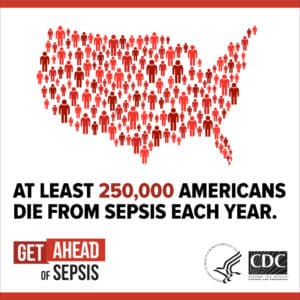81 year old female admitted with a one-day history of fever, rigors, weakness, and confusion. Blood and urine cultures were ordered as well as IV antibiotics.
Discussion/Decision Making Based on T2Bacteria Result
At this point in time, the hospital has not adopted T2Bacteria, however, another hospital in their system has. Given the high likelihood that the repeat BCx would be negative, they were asked to draw a blood sample on the day the patient was ready for discharge and send it to the institution that currently utilized the T2Bacteria Panel.
A courier was called and the test was run 4.5 hours after the blood was drawn, and resulted in 3.5 hours with no organisms detected. The information was relayed to the ordering resident and physician, and the patient was subsequently discharged roughly a day earlier with oral antibiotics. The clinician noted that even though this was not standard use of this test, it saved a patient a day in the hospital and also potentially spared the patient additional risk of hospital-acquired infections, further confusion, deconditioning, and risk of falls.
Presentation
81 year old female admitted with a one-day history of fever, rigors, weakness, and confusion. Blood and urine cultures were ordered as well as IV antibiotics.
Hospital Course
The patient was started on broad-spectrum IV antibiotics and baseline BCx and UCx grew E. coli. The patient rapidly defervesced after the initial antibiotics and was de-escalated to IV ceftriaxone and clinically improved. The patient was ready for discharge two days later, though need to wait for repeat BCx drawn that day to show no growth for 48 hours, thus, prolonging their stay an additional two days. It was noted the patient had an identical episode nine years ago, with a very sensitive E. coli in BCx and UCx and was discharged on oral ciprofloxacin.

 In the decade and a half since Dr. Nathan wrote these words, the standard of care has remained mired in “19th-century methods.” Despite important diagnostic improvements made to post-blood culture methods, the days-long culturing of blood remains the foundation for pathogen-specific identification. Since clinicians cannot wait days to act when confronted with a patient suspected of sepsis, the standard of care remains empiric therapy. In the 2018 book,
In the decade and a half since Dr. Nathan wrote these words, the standard of care has remained mired in “19th-century methods.” Despite important diagnostic improvements made to post-blood culture methods, the days-long culturing of blood remains the foundation for pathogen-specific identification. Since clinicians cannot wait days to act when confronted with a patient suspected of sepsis, the standard of care remains empiric therapy. In the 2018 book, 